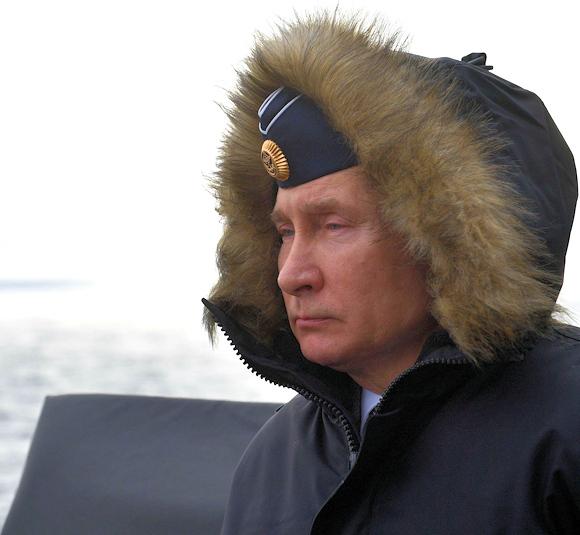The foreign policy of any country is, or should be influenced by history, culture and psychological aspects national receips drawn to popular roots; without Story there is no politics, and Russia, whether Holy, Soviet or Federal, is no exception; while in Moscow the end of World War II is not celebrated but the patriotic war as a political foundation, in Europe there is a tendency to go beyond the concept of nation-state, forgetting how relevant the awareness of uniqueness and diversity is in the East.
Putin, in his last presidential term, aimed at the Russian national reconstruction, and on the return to the international stage with a primary role, preserving both the Russian concept of authority vertical, both renewing the Armed Forces; Russian action was based on both tactical flexibility and strategic determination, according to a defined foreign policy line affirmative, consonant to give the contours of a rising power, according to the dictates of a foreign policy aimed both at ensuring undisputed independence on an international level, and at protecting the national interests supported by the geographical location in the center of Eurasia.
Moscow, to assert its hegemony, will inevitably have to continue to confront the Western powers; the chessboards are many, diverse, conflicting and extend from the post-Soviet area to the MENA area1, with open confrontations with the declining European powers and, above all on a global level, with the USA, the only geopolitical entity that pushes Russia to seek a condition of military strategic parity towards NATO, trying to find niches advantageous by guaranteeing political and security coverage to States in difficulty.
Russian policy on the Pacific, aimed at compensating relations with the West by enhancing itself rather than projecting itself towards the Eastern countries, highlights the desire to consolidate itself regionally, proposing itself however as a global player threatened by congenital structural weaknesses that undermine the dynamic momentum of a policy strong-willed foreigner, like a phoenix that finds it hard to rise from its ashes, that tries to avoid strategic defeats in the face of tactical returns, that relies on modern technology without detaching itself from its traditions, and with unknowns about a future in which Putin will still retain weight political, with a potentially destabilizing social evolution by younger generations who may continue to have to fear the exercise of oligarchic power.
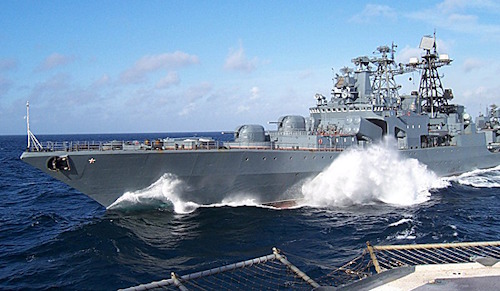
Geopolitics and defense therefore remain at the center of Russian-Western relations, given the difficulty of accepting the concept of multipolarity and the desire to downsize US hegemony.
So what is the Russian long-term strategy? Given the financial disparity with the US, Moscow must avoid head-on collisions, also given the Ukrainian quarrels and the contrast policy to NATO, which have contributed to resurrecting the image of the enemy from the East, a strategic difficulty for the Kremlin that has continued to attach a capital importance to geographical aspects and depth of power; a turnaround noted in the MENA area, where Moscow benefits from flexible alliances with Turkey and Iran with which it also interfaces as a mediator with the Gulf States, from military ties in recovery with Egypt, from agreements on oil prices with the Saudis, of discreet presences in Libya, of diplomatic relations with Israel, of political agreements with Afghanistan, of security and economic agreements with African countries. The problem therefore lies in the weight of a foreign policy that does not find compensation in adequate economic strength, and in a technological development that has not kept pace with the western one.
If Russia were to be considered an independent political actor, one could hypothesize the idea of a third party capable of mitigating the bipolar confrontation between China and the USA; there phoenix post Putin, will he be capable of it?
Pennies and Bullets
conomically, Russia bases its strength on the export of gas and oil, a projection that does not seem to know any crisis but that, without investments, does not actively contribute to economic diversification, with a trend that follows growth below potential and which requires of resilience to support external shocks - falling oil prices and rising interest rates - and which could be affected by the bad dutch, the apparent relationship between the exploitation of natural resources and the decline of the manufacturing sector; a resilience which, however, could suffer from the use of the ruble, which accentuates the exchange rate risk and is linked to the sanctions in force, which would be mitigated with a Russification of the internal market, but which is actually facilitating a permanent one status quo which does not reward the development of cognitive skills useful for survival.
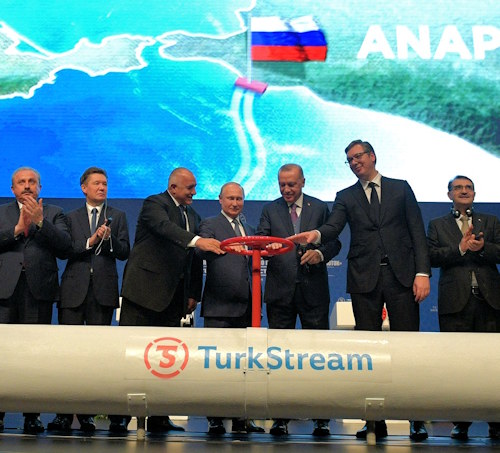
In summary, given the inflationary pressures, the risk of capital flight abroad and the loss of skilled labor, Russian growth is weaker than expected, its global economic share is still low, and the geographic possibility of exploiting is important participation in the Chinese BIS. From this point of view, military spending also becomes significant, especially in light of the data that see the USA first (undermined by China), with Russia decidedly detached, albeit in a period of overall increase; it should be remembered that the ranking in dollars penalizes Russia for the devaluation of the ruble, also due to the sanctions, and that part of the resources allocated to defense is not included in the MoD budget2which, however, does not avoid inequalities even with the English budget, a decline recorded for the first time since the 90s.
If it is true that the government's objective is national economic development, the hypothesis of spending less than 3% of a GDP confirmed to grow between 1,6 and 1,7%, conditioned by decreasing prices, could be founded of oil, and inserted in a global financial context for which a new recession is expected.
We talked about politics, GDP and economics: now let's look at it wish room. President Putin has often spoken of revolutionary weapons: how concrete can there be?
Since 2000 there has been an effective development of the capacities of the FFAA, with an improvement of the strategic air defenses and with short range and cruise ballistic missiles; to this was added the increase in contract combat units, better training, a capacity, albeit limited, of projection of power (Syria) which, however, gave way to believe that the war capabilities are not uniformly distributed in all FFAA, with a transition period that will take the next decade; the Navy, in particular, does not yet seem capable of projecting power and covering an aspect Blue capable of guaranteeing effective maritime power.
So now we focus attention not so much on the weapon systems advertised in 2018 by the Kremlin, as on the hypersonic missiles, which have recently been given notoriety; there are two types: the HGV (hypersonic planing aircraft) without autonomous propulsion that are launched from rockets destined to glide over the target up to 6.000 km away, and the HCM (supersonic cruise missiles) launched by planes or missiles and propelled by advanced jet engines (scramjet).
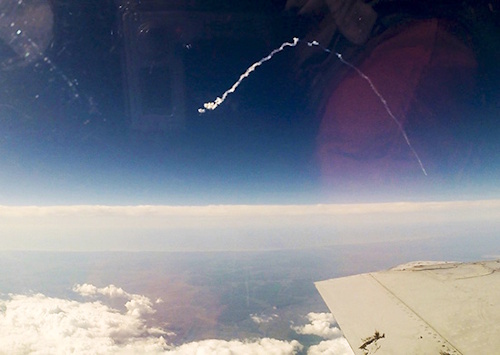
A "hypersonic" missile must be able to reach a speed at least five times higher than that of sound (more than "Mach 5") and must be made with particular types of ceramics and metal alloys to protect electronic components against atmospheric and chemical alterations. trigger of ionization processes. The U.S. alone spent approximately $ 2019 billion on research in 2,6, forecasting to reach $ 5 billion a year by 2025.
The idea is not new, and dates back to the 30s3, and has been taken up in the USA and the USSR since the 50s, in particular for the return of spacecraft. Hypersonic technology requires a know-how remarkable, so as not to make the hypothesis that the evolution of operational weapons may require other years of research seem unfounded.
Hypersonic military vehicles, with a payload of half a ton for conventional or nuclear ammunition, are in fact a kinetic weapon aimed at hitting lightly armored or underground structures with shock waves that can be propagated hundreds of meters underground. The difficult radar traceability and the unpredictability of the trajectory make the anti-missile defense particularly problematic.
Let's do the realistic damper now. The main competitors for hegemony (USA and China, which is experiencing severe difficulties in replicating western technologies) are still developing the hypersonic project: a few months ago the news of the US award of specific contracts to Dynetics for the fuselages and to Lockheed Martin to equip the weapon with systems capable of making it mobile; a previous contract, again with Lockheed, reached the sum of 900 million dollars.
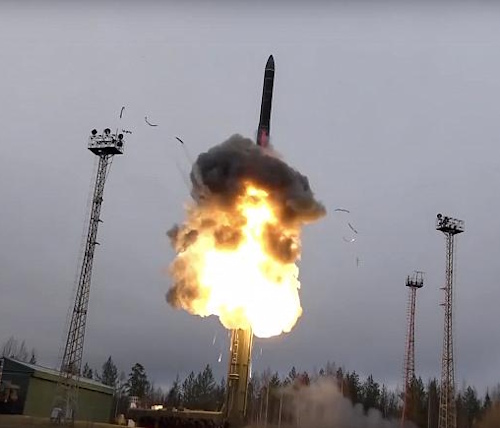 Always giving the Russian launch tests of a hypersonic interceptor missile last June, and the Chinese ones of the hypersonic re-entry vehicle starry sky 2, doubts remain about current technological capabilities in the face of budget availability (the future is a hypothesis4). Let's talk about the airborne hypersonic missile Kinzhal, and Hypersonic bullet Vangard, strategic interceptable vector more advanced than the Kinzhal, which is attributed the ability to fly to Mach 20. Currently, the only medium capable of flying at a speed of 58.536 kilometers per hour appears to be New Horizons5, the artificial object that has reached the highest speed in leaving Earth.
Always giving the Russian launch tests of a hypersonic interceptor missile last June, and the Chinese ones of the hypersonic re-entry vehicle starry sky 2, doubts remain about current technological capabilities in the face of budget availability (the future is a hypothesis4). Let's talk about the airborne hypersonic missile Kinzhal, and Hypersonic bullet Vangard, strategic interceptable vector more advanced than the Kinzhal, which is attributed the ability to fly to Mach 20. Currently, the only medium capable of flying at a speed of 58.536 kilometers per hour appears to be New Horizons5, the artificial object that has reached the highest speed in leaving Earth.
The implementation of hypersonic weapons, in light of the results achieved by Israel's supersonic ones in beating Hezbollah positions in Syria6, could present destabilizing aspects due to the strategic balance that remained steadfast in the Cold War, given the ambiguity of the transportable armament, the difficult and quick identification of the actual target with the consequent response, not to mention that the war abilities could also attract other countries who intended to obtain a deterrent force against the same major powers: the risk of a proliferation of hypersonic weapons cannot therefore be excluded.
Now let's add a bleak color note: accidents. August 12, 2000, K-141 nuclear submarine Kursk; July 2019, AS-12 nuclear submarine Russian submarine Losharik specialized in SIGINT operations; August 2019, nuclear accident in the Arctic Ocean due to the malfunction of the burevestnik, nuclear-powered missile described as theunrestrainable, which is associated with the mini torpedo Poseidon equipped with cobalt 60 bombs, and which caused seven victims and strong radioactive contamination. It must be said that the other powers have also incurred accidents, but certainly the latter, given the battage, leave you thinking.
The best stories ...
We conclude with some ideas. Let's start from cognitive war; there is no doubt that the Russians have been undisputed masters of disinformation: that the scores of the symphonic works are accessible is clear, that everyone knows how to perform them is not said. In light of the expiration of the agreements for the non-proliferation of atomic weapons7, who in the renewals did not see the Chinese government and which could not concern the latest generation of missiles, being able to sit at a table of Big from an at least equal position it can be fundamental, especially if finance and technology absent.
Moreover, according to Arquilla and Rundfeldt, war experts on the net of the Rand Corporation, "It is no longer who has the biggest bomb that will prevail in tomorrow's conflicts, but who will tell the best story".
Two other ideas seem to be worthy of note; the first concerns the economic outlook recessive: the impact of a new global crisis could put the floor maintenance to any ambition, especially if related to a downward trend in the oil market, fundamental for Russia; the second concerns the operating contexts, which have become much more complex and insidious than in the past, which makes the American decline feel not so close.
Staying anchored to the ground, we could say that the time to decide whether to focus on star hunting TIE of the imperial forces, rather than the T-65 X-Wing Starfighter supplied to the rebel forces still has not arrived.
1 Middle East North Africa
2 Ministry of Defence
3 Austrian aviation engineers Eugen and Irene Sänger
4 Enrico Ruggeri
5 Space probe developed by NASA for the exploration of Pluto and its satellite Charon
6 Rampage missiles
7 INF (Intermediate-Range Nuclear Forces Treaty) and New Start (New Strategic Arms Reduction Treaty)
Photo: Kremlin / MoD Russian Federation

